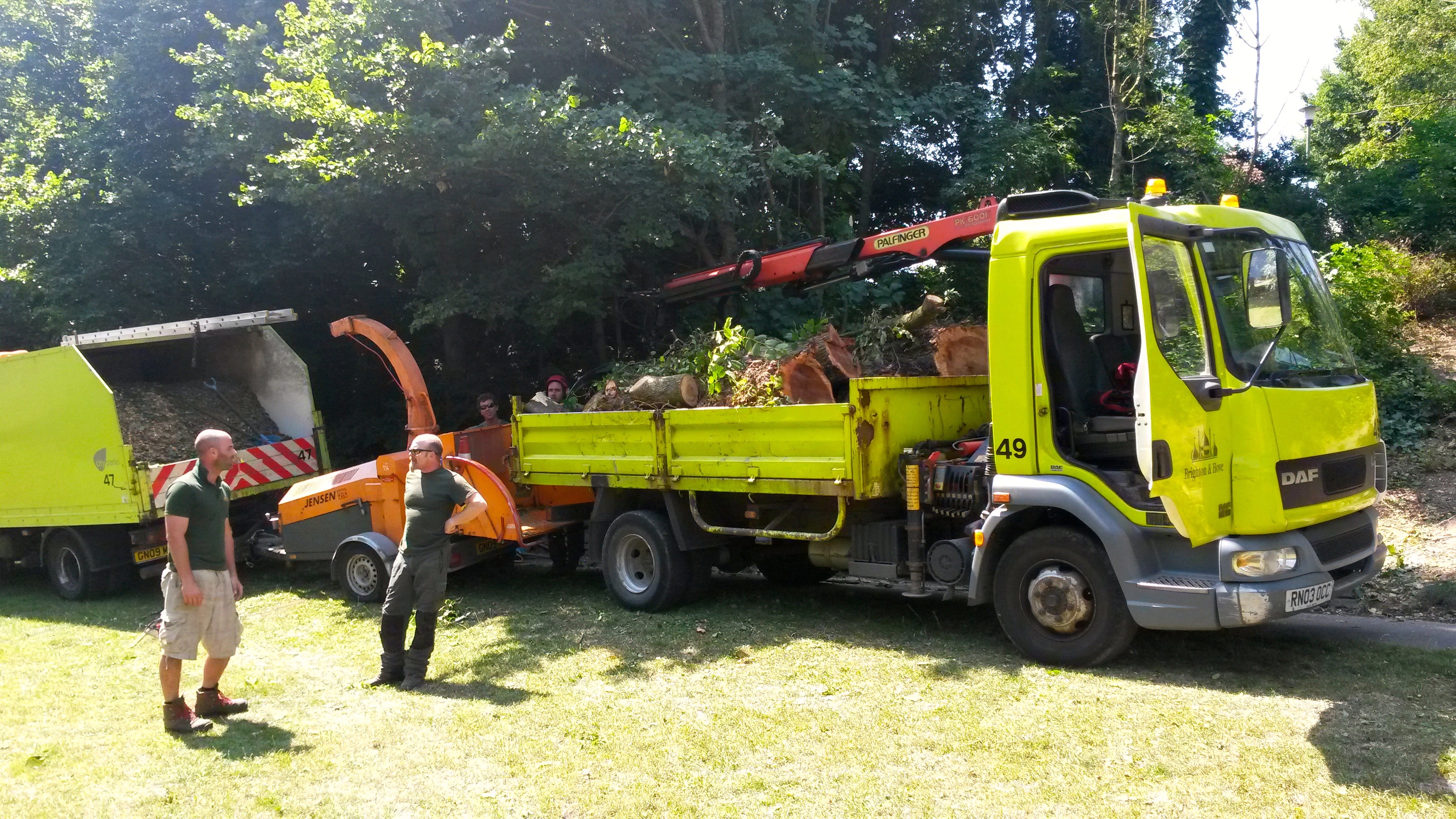other
← Meet The Councillors Fishy Business →Elm Disease In Queen’s Park [updated]
July 14, 2015This is a worrying time for tree lovers in Brighton and Hove. The warm summer months of June, July and August are the high risk period for elm trees in the area as they come under attack from the elm bark beetles that carry the disease.
There have already been some significant casualties in the annual struggle with elm disease, noticeably the loss of a gnarly old elm – over 150 years old – in the heart of Queen’s Park [above]. “We don’t like to lose that one important tree,” says the council, and they are likely to be cutting a trench in the park around the roots of the felled tree to prevent infection spreading.
Another sick tree was spotted on the park side of West Drive, and both were swiftly felled by the council’s arborocultural team and carried off to be cremated in the council facilities at Patcham.
Last year, three elms were cut down at the foot of Freshfield Road. Now a new case has been identified at the top of the road, just up from the Freshfield Arms pub [see photo].
This provides a perfect example of what the disease looks like [above], with the distinctive out-of-season discolouration set against the remaining green leaves of a once healthy tree.
Alarming as these incidents are, they are not unusual for summer, and the overall condition of the elm population in Brighton & Hove is described by the council as ‘pretty good’. The numbers of infected trees are at manageable levels, remaining steady for at least the last five years. The situation is somewhat worse outside of the city, in East Sussex, where cutbacks in forestry budgets may have contributed to the loss of several significant Elms in the Alfriston area. The worst outbreak of elm disease identified in Summer 2015 has been in the grounds of Sussex University, where 60 elm trees were recently felled.
IMPORTANT: if you have an elm tree in your garden, and have identified an infection, the council will remove the tree free of charge. See full details on the council website here. If you have spotted any other outbreaks of the disease, please contact the council via the parks website.
You can read more about the Elm Trees Of Queen’s Park here.
This entry was posted in Uncategorized. Bookmark the permalink. ← Meet The Councillors Fishy Business →-
Archives
- March 2024
- February 2024
- November 2023
- October 2023
- June 2023
- April 2023
- September 2022
- February 2022
- November 2021
- October 2021
- September 2021
- July 2021
- June 2021
- May 2021
- November 2020
- September 2020
- August 2020
- June 2020
- February 2020
- December 2019
- November 2019
- September 2019
- August 2019
- June 2019
- March 2019
- November 2018
- September 2018
- July 2018
- June 2018
- May 2018
- March 2018
- November 2017
- October 2017
- August 2017
- July 2017
- June 2017
- May 2017
- April 2017
- March 2017
- January 2017
- November 2016
- October 2016
- September 2016
- August 2016
- July 2016
- June 2016
- May 2016
- February 2016
- January 2016
- December 2015
- November 2015
- September 2015
- July 2015
- June 2015
- May 2015
- April 2015
- March 2015
- December 2014
- November 2014
- October 2014
- September 2014
- July 2014
- June 2014
- May 2014
- April 2014
- March 2014
- January 2014
- December 2013
- November 2013
- October 2013
- July 2013
- June 2013
- May 2013
- April 2013
- February 2013
- January 2013
- December 2012
- November 2012
- October 2012
- August 2012
- July 2012
- June 2012
- May 2012
-
Meta




